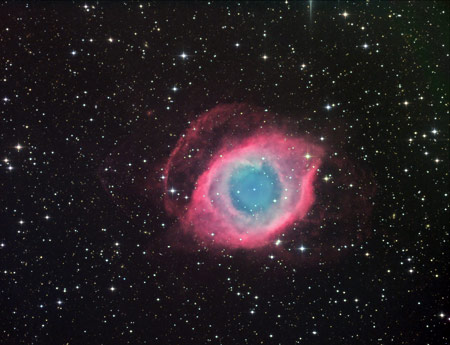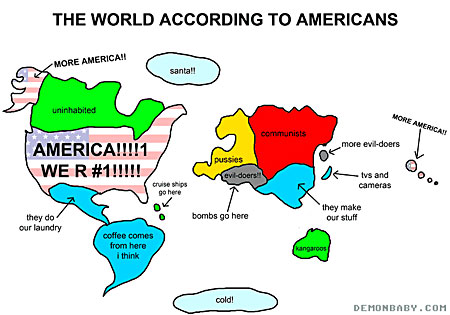Designed by: Unknown
Year: 2004
The title to the new Indiana Jones film has been announced: “Indiana Jones and the Kingdom of the Crystal Skull.” Not sure I like it yet seems too long. But Steven Spielberg and George Lucas didn’t call me to ask for my input.
The length of the title “Kingdom of the Crystal Skull” is the same as “Raiders of the Lost Ark,” but much longer than “Temple of Doom” and “Last Crusade.” So it could work as compared to “Raiders.” The difference, though, was that when “Raiders” was first released, it was simply known as “Raiders of the Lost Ark.” Today for alphabetization and consistency purposes, the movies is now known as “Indiana Jones and the Raiders of the Lost Ark.” Too long also. But like I said, no one called me to check with me first. Too bad.
Back in early August, six titles were registered with the Motion Pictures Association of America (MPAA):
- Indiana Jones and the City of Gods
- Indiana Jones and the Destroyer of Worlds
- Indiana Jones and the Fourth Corner of the Earth
- Indiana Jones and the Kingdom of the Crystal Skull
- Indiana Jones and the Lost City of Gold
- Indiana Jones and the Quest for the Covenant
None of them seem too particularly grabbing, but we’ll soon see how the movie turns out. And apparently there’s a new cast member according to this picture: Karen Allen as Marion Ravenwood, Indy’s girlfriend from “Raiders.” Curious.
I thought the 160 GB iPod classic was pretty astounding in how much storage room was available on the device, even though it’s a hard-drive-based device. Well, a researcher at the IBM labs says in a few years, his technology can give us a 500+ GB iPod Nano. I don’t know what anyone would do with all that room for storage, but hey, that’s not the point! From the New York Times:
Now, if an idea that Stuart S. P. Parkin is kicking around in an I.B.M. lab here is on the money, electronic devices could hold 10 to 100 times the data in the same amount of space. That means the iPod that today can hold up to 200 hours of video could store every single TV program broadcast during a week on 120 channels.
Apparently I have some subconscious cult attraction to Michael Jackson’s “Thriller.” Second post in a week! The first was the prison reenactment. This time it’s Legos.
I love YouTube.
Designed by: R/Greenberg Associates
Year: 1979
The torch for the 2008 Beijing Olympics:
More from the torch’s website:
The torch of the Beijing Olympic Games has a very strong Chinese flavour. It demonstrates the artistic and technical level of China. It also conveys the message of a Green Olympics, a High-tech Olympics and the People’s Olympics. The shape of the paper scroll and the lucky clouds graphic, expresses the idea of harmony. Its stable burning technique and adaptability to the environment have reached a new technical level. The torch of the Beijing Olympic Games is designed, researched and produced in China.
(Nod: Fumin)

Think that bottle of water you’re drinking is healthy for you? That depends on your definition of healthy. From Time Magazine:
The [National Resources Defense Council] estimates that 4,000 tons of CO2 is generated each year the equivalent of the emissions of 700 cars by importing bottled water from Fiji, France and Italy, three of the biggest suppliers to the U.S.The pollution of the skies is matched by the trash left underfoot. Fewer than a quarter of plastic bottles are recycled, leaving 2 billion lbs. (900 million kg) a year to clog landfills.
2 billion pounds of plastic bottles. 2 billion. How much does an empty plastic bottle weigh? Not much, so think about how many empty plastic bottles make up 2 billion pounds.
ABC News quotes Allen Hershkowitz of the NRDC:
It’s ironic that on some of the labels of the bottles, you see snow-capped mountains and glaciers when in fact the production of the bottle is contributing to global warming, which is melting those snowcaps and those glaciers.
The Pacific Institute, an environmental group, has more jaw-dropping statistics at their website. For instance, the price of a cubic meter of water of California tap water was $0.50 in 2003; the same amount of bottled water in California would have cost $995 in 2003.
But bottled water is healthier than tap water, right? Not according to the NRDC, quoted by National Geographic:
The Natural Resources Defense Council, which carried out a four-year review of the bottled water industry, concluded “there is no assurance that just because water comes out of a bottle, it is any cleaner or safer than water from the tap.”The New York City-based action group added that an estimated 25 percent of bottled water is “really just tap water in a bottle sometimes further treated, sometimes not.”
So how do you weigh the supposed health benefits of bottled water? The water inside the bottle may not be any different than straight tap water; the price you pay for a bottle of water is hundreds-of-times more expensive than tap water, forcing you to throw money away; the cost to the environment from the level of garbage amassed by bottled water is staggering what’s healthy about producing more garbage; and what’s healthy about using more and more oil in a world over-consuming this volatile and non-renewable natural resource? Bottled water has received tremendous hype for being healthier than regular tap water, but all the hype can’t match the reality.
What can we do, though, to help solve, or at least curb, the problem? A greater encouragement of consuming filtered tap water over bottled water would be a start. Another action: greater structured and incentivized municipal recycling programs. What better way to get people motivated to do something than offer them money in return. Several states already do this. More need to. And why can we only recycle plastics labeled with a 1 or a 2? How much plastic is thrown away each year labeled with a 3, 4, or 5?
If something isn’t done, and done quickly and smartly, we’re not only throwing away our bottles and our money, we’re throwing away our future.
(Photo: James Meyer / Stock.xchange)
Krigh Bachmann in Toronto set up a digital camera and took a picture of the harbor every two seconds for two hours to create a really cool time lapse sequence.
Designed by: Nexus Productions
Year: 2002
Designed by: R/Greenberg Associates
Year: 1978
As a bonus, here’s the “Superman Returns” version:
http://www.youtube.com/watch?v=-W-XtWob9woDesigned by: Kyle Cooper
Year: 2006
Designed by: Daniel Kleinman
Year: 2006
Can you figure it out? It flew way over my head.
(Nod: The Daily Dish)
At the end of July, it was reported that North Carolina was flirting with moving from a winner-take-all method of allocating electors for the Electoral College to a district method, where candidates receive electoral votes based on the number of Congressional districts they win, and the winner of the state’s popular vote gets the state’s remaining two electoral votes. The North Carolina bill died in the state legislature. I noted that past presidential elections at the state-level would have been altered had this proposal been enacted in the past, but likely without much nationwide alteration.
Enter California, with its 55 electoral votes, more than any other state (Texas is #2 with 34). GOP strategists in California want to move the state to a district allocation method, like Maine and Nebraska, and away from the winner-take-all method. The result? From a New York Times editorial:
If California abandons its winner-take-all rule while red states like Texas do not, it will be hard for a Democratic nominee to assemble an Electoral College majority, even if he or she wins a sizable majority of the popular vote. That appears to be just what the backers of the California idea have in mind.
So forget about actual Electoral College reform. This ballot initiative is only after trying to prevent a Democratic candidate from winning the White House in the future. The Democratic candidate is usually assured to win all of California’s electoral votes and needs to win California in order to either win the White House or have a shot at it.
The group behind the initiative is called Californians for Equal Representation and has ties to a major donor to the infamous Swift Boat Veterans for Truth. We can only hope the citizens of California realize this rosy-sounding group is up to shameful and divisive tactics. Otherwise, presidential politics will surely change for the foreseeable future, and not in a positive way.
As I did for the North Carolina article, here are the results of past presidential elections with this proposal applied, as computed by my thesis:
2004
Kerry: 33
Bush: 22
2000
Gore: 35
Bush: 19
1996
Clinton: 38
Dole: 16
1992
Clinton: 38
Bush: 16
1988
Bush: 25
Dukakis: 22
1984
Reagan: 39
Mondale: 8
So as a hypothetical, let’s say in 2000 it was Al Gore who won the Electoral College 271 to 267 rather than the opposite way it turned out. Had California allocated its electoral votes with the district method, the election would have been overturned, giving George W. Bush a 286 to 252 majority (CA had 54 electoral votes in 2000 if you’re checking my math).
(Nod: ThinkProgress)
After seeing the touch-screen technology on the iPhone, it was only natural to expect an extension of this beauteous creation to the iPod. And today we’re treated to exactly that. Yay. It, meaning one with my name on it, ships by the end of the month.

I heard about this, but I hadn’t seen this until today. Perhaps if the prisons in the US employed this tactic there would be far less people incarcerated. Just a thought.
…even from outer space:

A photo of the Helix Nebula in the constellation Aquarius from the Astronomy Picture of the Day.
(Nod: Amy)
Found this humorous yet somewhat truthful map via StumbleUpon:

Designed by: yU+co
Year: 2006
Michigan wants to move its Democratic primary to 15 Jan 2008, one day after the Iowa caucuses and before Nevada, New Hampshire, and South Carolina. In addition, the Florida primary is on the same day as South Carolina, 29 January. The DNC has decided to strip Florida of all its delegates, and is encouraging presidential candidates not to campaign in Michigan or any other state that holds a primary or caucus before “the four”: IA, NV, NH, and SC. Richardson, Biden, Dodd, and now Edwards and Obama have signed the pledge not to campaign in Michigan and any other like-state.
I wrote a while ago on the dangers of the primary schedule we face next year. It is encouraging to see some body with power fighting back against this system that has spiraled out of control. More, however, needs to be done.
Donna Brazile, Al Gore’s 2000 presidential campaign manager and member of the rules and bylaws committee of the Democratic National Committee, writes in an op-ed piece in the Washington Post on why Florida was stripped of its delegates and that the system needs a massive overhaul for the future. Quote:
Our nominating process is supposed to yield the best possible candidates for the most powerful position in the world. Unfortunately for all of us, it is a deeply flawed system in desperate need of reform. Recent proposals to create a regional rotation system in 2012, or the “Delaware Plan” to allow smaller states to go first, should be on the table for discussion starting this fall.
As we begin to contemplate the calendar for 2012, and the rules that will govern that process, both major parties must craft a system that makes sense for voters and candidates. We can begin by setting a reasonable starting date I suggest the time when the snow gives way to tulips and daffodils. We can make sure the nominating schedule does not unfairly favor the rock stars of politics. And we must make sure the campaign finance laws allow more than just the candidates with deep pockets and ties to big donors to be competitive.
That last statement in her article is becoming more and more concerning. From the NYTimes blog:
[…] to campaign in large states like Michigan and Florida, while also stumping in the approved early states, would probably require significant ad buys in expensive media markets. The campaigns of Senators Obama and Clinton may be able to afford that the others can’t, regardless of strategic priorities for either retail politics or mass messaging.
Any overhaul of the primary schedule in the future MUST be met with overhauls in campaign finance. Not just reforms. Overhauls. So far in this election cycle, all the presidential candidates have raised a combined total of just under $300 million. There is absolutely no reason this amount of money needs to be collected, and certainly not this early into the cycle.
The Founding Fathers certainly didn’t envision nor want running for political office, and surely not running for president, to be about who can raise the most money. Running for office is supposed to be about the most qualified candidate, regardless of anything else.
Unfortunately, gone are the days when just anyone could decide to run for office. Now you need money, money, and more money. In today’s system, only those with money or those with connections to money can run and win. A very sad reality, one which will likely get worse, because money is power. Those with money have the power. Those without want it.
Until Congress and the major political parties can wake up and act on both the primary system and campaign finance, we’ll continue living in the same corrupted system, a system bankrolled by millionaires, corporations, and other wealthy, politically-inclined organizations.
Designed by: Saul Bass
Year: 1960
Stellar work has been done in the movie title sequence industry. I’m going to highlight some of that work in the next several weeks. To begin:
Designed by: Kyle Cooper
Year: 1995
What makes a great film? Is it the director? The producers? The acting, the screenplay, or the music? No one thing can make a film great by itself. A great film is made from successes in every area, from behind the camera, in front of it, and beyond it. From the moment the film begins, the audience should be captivated, drawn-in, and thirsting for more. What in film is the first thing the audience sees — the first thing to capture the audience or the last thing before leaving the theater? The titles.
Most film title sequences are simply text over image or a colored background, but more and more films today are employing slick graphics, illustrations, and motion to move the audience through the list of names and titles. These elaborate pieces of art are highly capable of standing alone from their films, but placed in context with the film, the titles elevate the experience for the audience.
Film titling is an art form onto itself with a history to back it up. This art form, unfortunately, has gone largely unrecognized by the Academy of Motion Picture Arts and Sciences. Just as lighting, costumes, and sound provide integral components to a film, so do title sequences. While makeup artists, film editors, and song composers garner accolades for their artistry, creators of title sequences are overlooked. This travesty must be rectified by the Academy by inclusion of an Oscar for Best Title Sequence.
Since 1997, the Emmy Awards, given out by the Academy of Television Arts and Sciences, have included a similar category Outstanding Main Title Design. The work created for many of the television programs nominated in this category has been on par with title sequences created for films. The television academy has realized the importance of including this award. Why has the motion picture academy not done the same?
Historically, the Academy has been famously stubborn about adding new categories. In the last twenty-five years, only two categories have been added Best Makeup in 1981 and Best Animated Feature in 2000.
For whatever reason, the Academy shuts out film artists who positively contribute to films year after year and deserve its recognition.
Having an award for Best Title Sequence can only do great things for the industry and for films in general. Honor the past, recognize the present, inspire the future. The historical groundings of the title sequence and the industry’s pioneers, like Saul Bass, Pablo Ferro, and Maurice Binder, would finally be properly honored; current artists would garner the recognition they deserve; and an Oscar would also highlight this growing art form and inspire and give incentive to push the limits even more. What is more inspiring to push creativity and technical constraints than the potential at winning an Oscar and the recognition that comes with it?
Having an Oscar for Best Title Sequence is the right thing to do to honor the history and creative aspects of this art form. While films like “Psycho” and “Se7en” could have survived without their title sequences, both films would have lacked a crucial and creative way to set the films’ moods and entice the audiences while introducing the cast and crew of each film.
The Emmys have their act together. Now it’s time for the Oscars.
In 1979 and 2002, Phoenix had a record 28 days of 110° or more. Well as of yesterday, this year we’ve had 30!
Reminds me of a quote from “Family Guy”:
http://www.youtube.com/watch?v=7fgjLgWJkdE